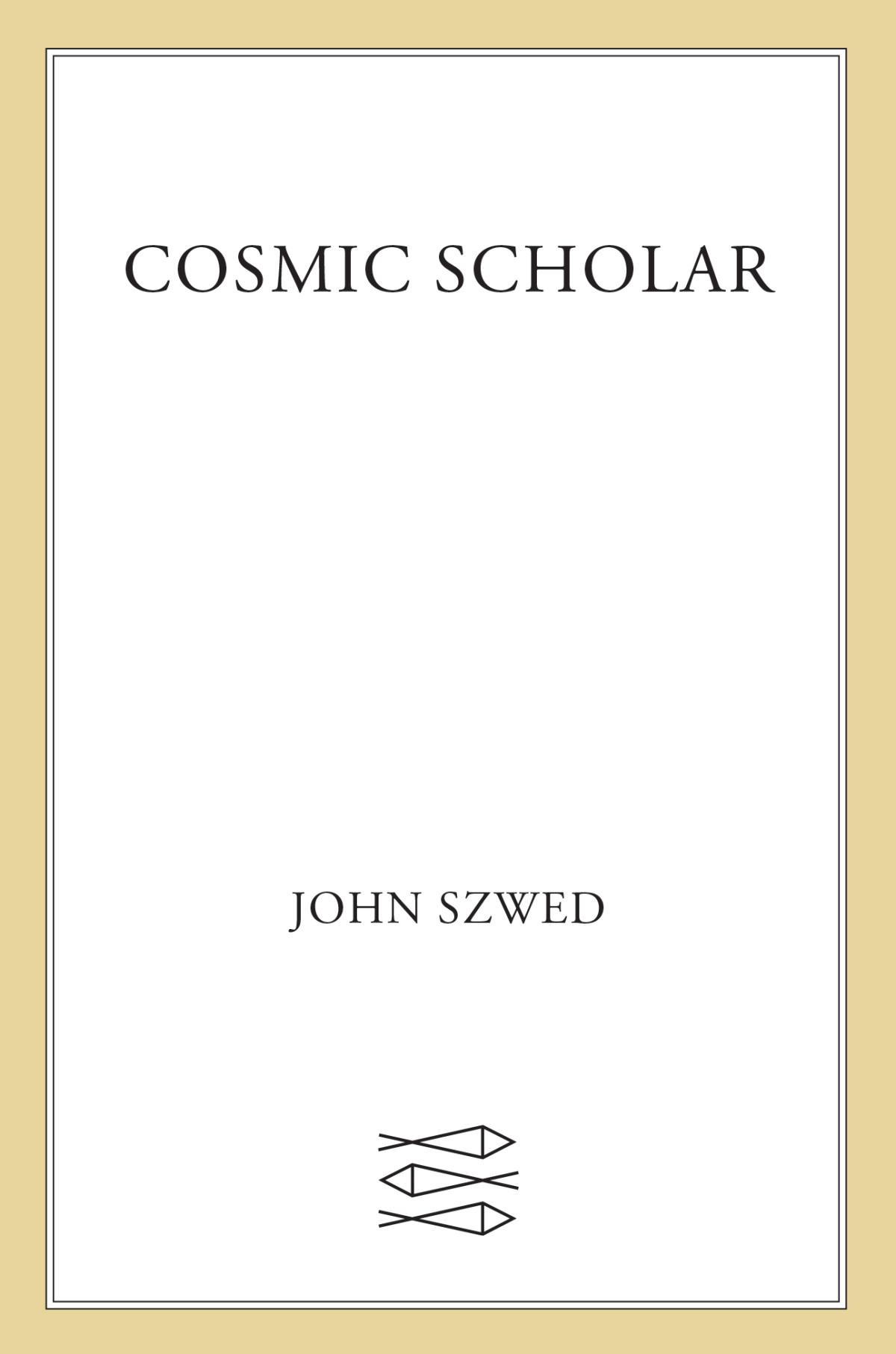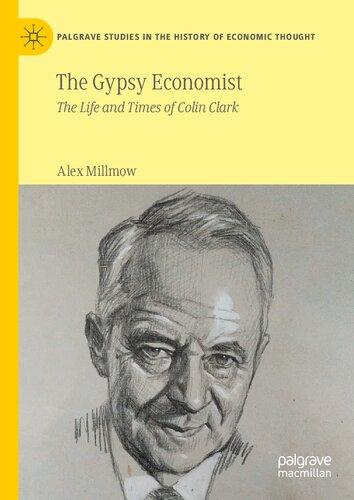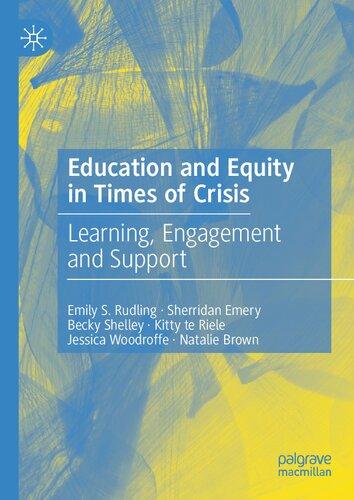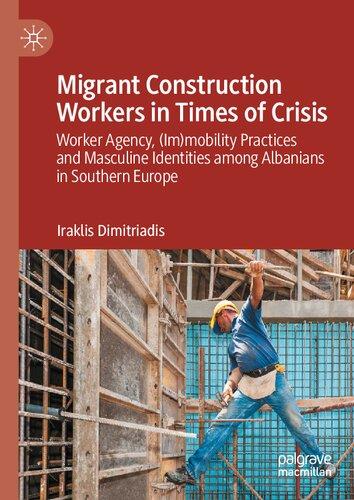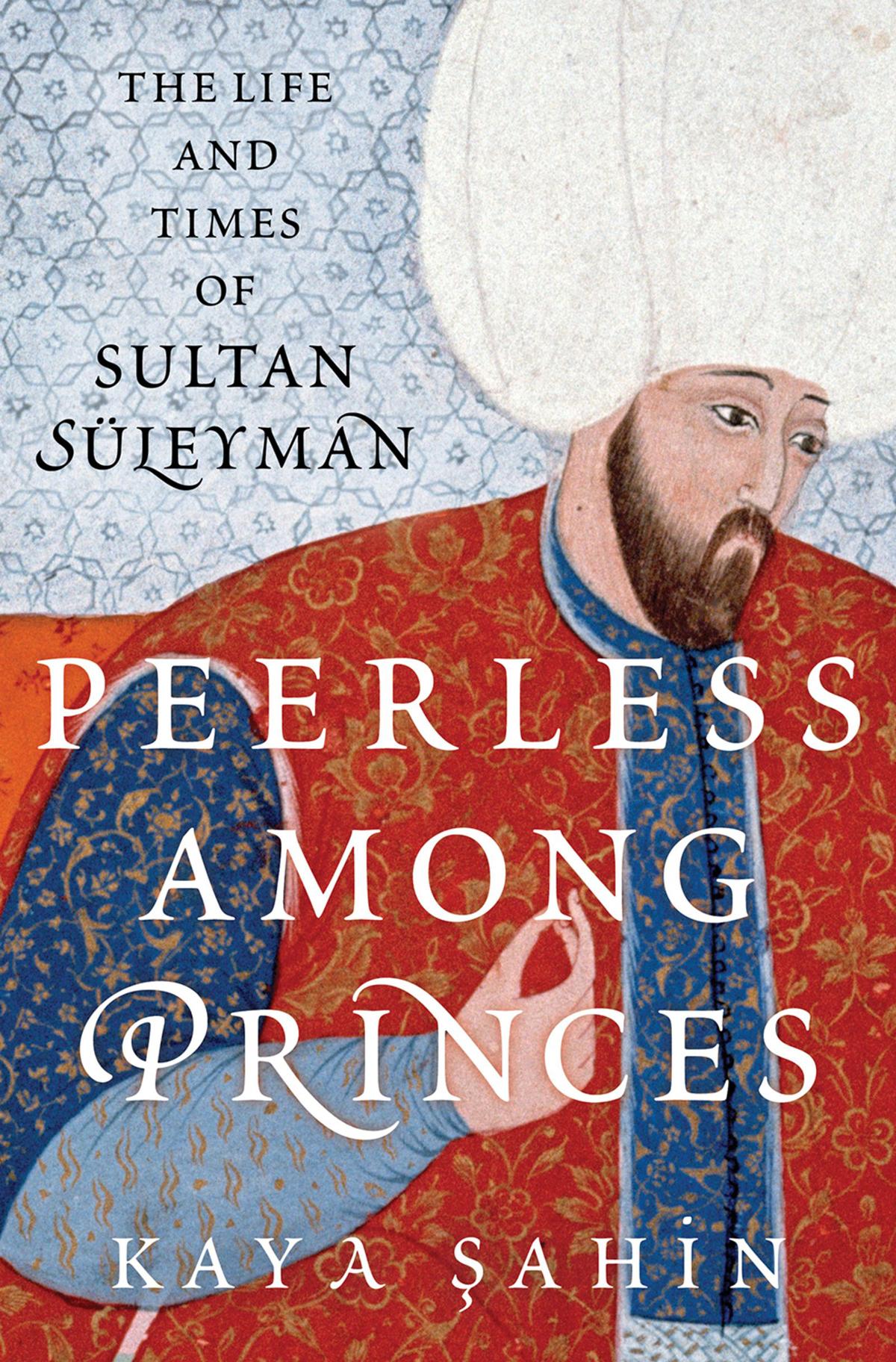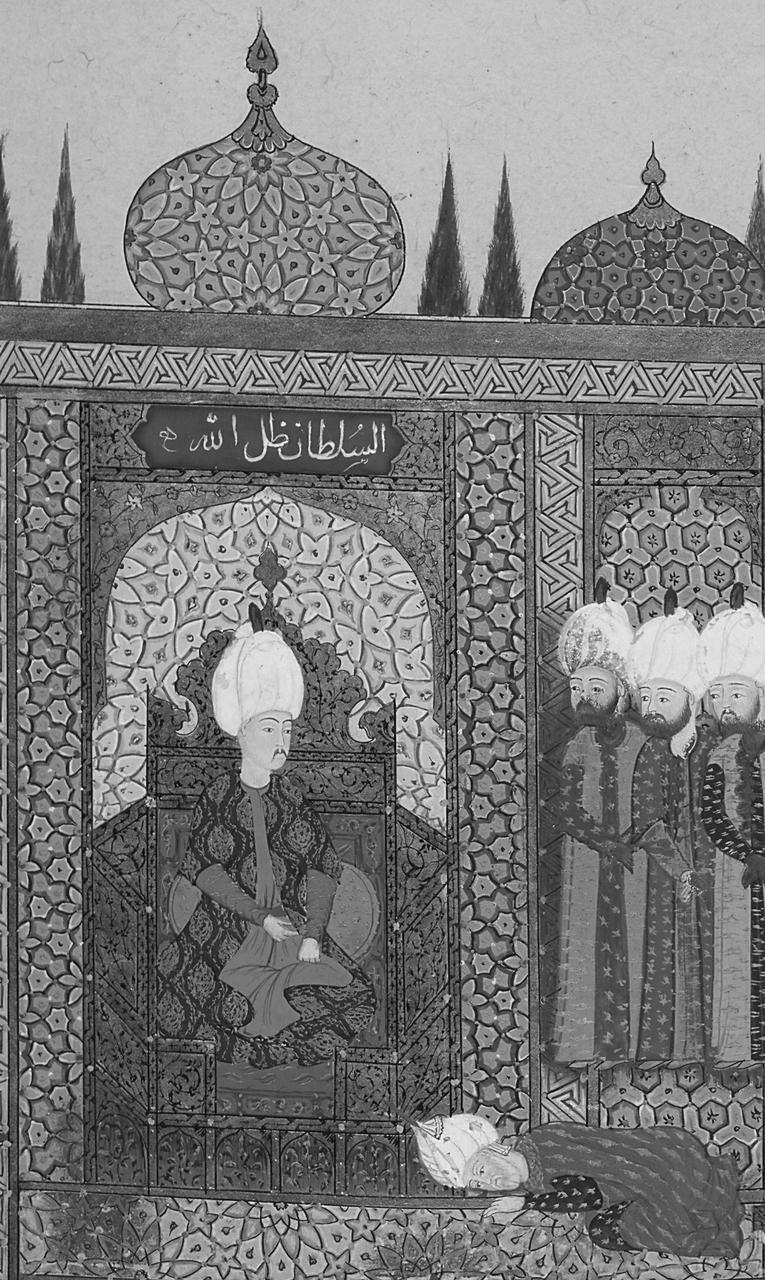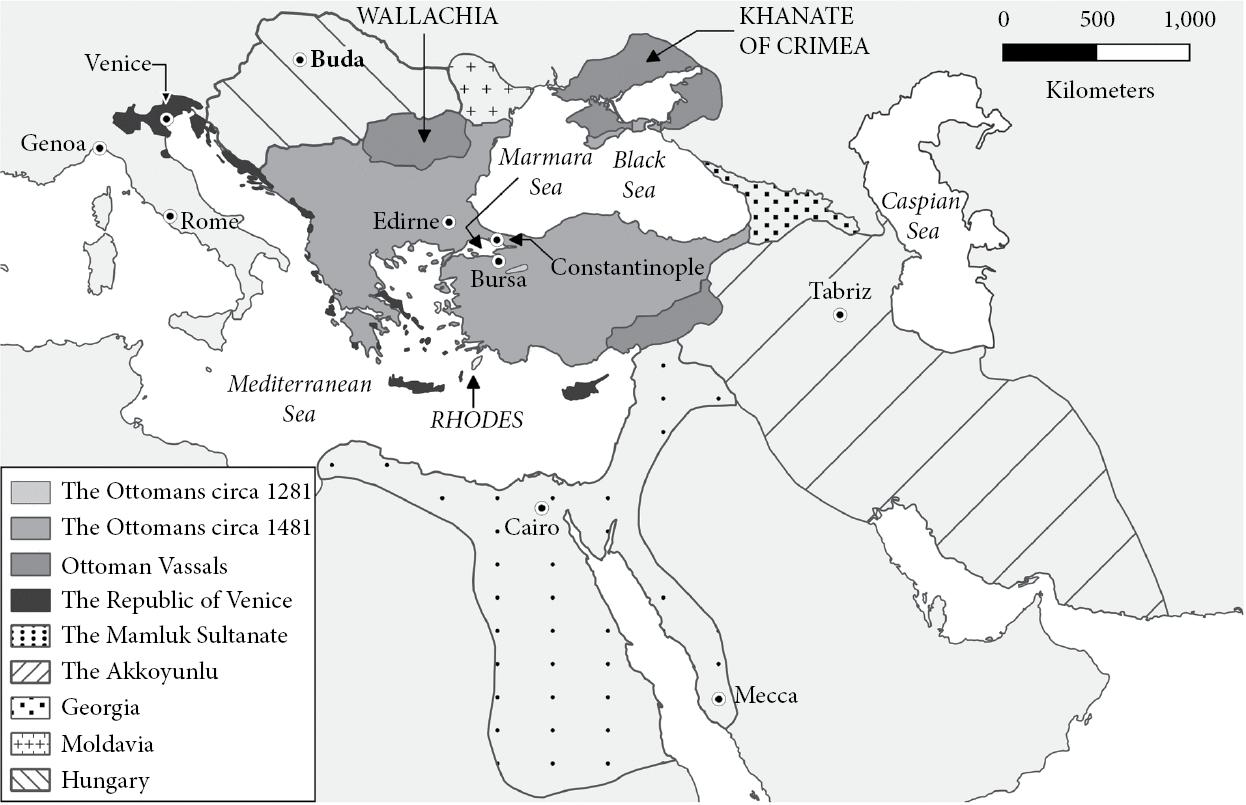Acknowledgments
The journey of this book began with a phone call from Bonnie Smith more than six years ago. Having read my first book, which dealt with empire-building during the reign of Süleyman, Bonnie wanted me to write a biography of the sultan. I was initially cautious about writing the biography of a “great man,” and I also wondered about whether there was an audience for such a project. Bonnie’s reassurance was comforting and convincing, and I slowly started working on a first version under her guidance. That first version was supposed to be a short book, with a minimum of notes, geared toward a student audience. I was done after three years, working during breaks and summer holidays. However, due to the vicissitudes of the publishing world, there came a point when it felt like the short book I wrote would be doomed to a desk drawer, or rather a corner of a computer hard drive.
Susan Ferber, my editor at Oxford University Press, entered the picture at that critical point. She took on the project and immediately came up with the idea of expanding the short book into a much larger one. Thanks to her guidance, and the two wonderfully detailed anonymous review reports she obtained, I started working on a new version. Susan was kind enough to read and profusely comment on everything I wrote; her suggestions, and the generous comments of another anonymous reviewer, helped me finalize the book you now have in your hands or on the screen of your electronic device.
I could not have written this book in a vacuum. I was fortunate to rely on the help and support of a group of fellow historians and good friends, whose scholarship and collegiality were instrumental in improving the book. They read and commented upon various versions, helped me obtain research materials that were hard to
locate, discussed some general and some very arcane matters pertaining to Ottoman history, and unanimously offered their encouragement. I mention their names in alphabetical order of their surnames here, aware that this does not come even remotely close to thanking them appropriately: Gabor Ágoston, Nikolay Antov, Ahmet Arslantürk, Hall Bjørnstad, Günhan Börekçi, Erdem Çıpa, Sinem Eryılmaz, Emine Fetvacı, Vural Genç, Christopher Markiewicz, Kevin Meskill, Nedim Nomer, Burak Onaran, Kahraman Şakul, Murat Şiviloğlu, Ralph Walter, Zeynep Yelçe. Halil Dilek, the late Saltuk Dönmez, Işıl Ertüzün, Murat Arayıcı, Müge Gürsoy, and Semih Sökmen lent their expertise in medicine, psychology, and publishing. Defne Halman kindly gave permission to use translations of Süleyman’s poetry by the late Talât Sait Halman.
Talking about encouragement, I want to particularly mention two senior colleagues whose exemplary work has been a guiding light for so many Ottomanists and scholars of Islamic societies. At a critical turning point in the writing process, Gülru Necipoğlu offered extremely useful insights on the task of writing a biography of Süleyman. Feridun Emecen generously shared a copy of his own biography of Süleyman before its publication and commented on my manuscript. I am very grateful to both for their support.
Even in a research-focused institution, like my current home, Indiana University Bloomington, teaching and administrative service occupy the bulk of an academic’s time. Research and writing almost always require additional support. I conducted extensive research and began writing the final draft in 2019–20, thanks to a New Frontiers of Creativity and Scholarship Grant and a sabbatical semester. A new office provided by the Hamilton Lugar School of Global and International Studies allowed me to work particularly productively. I finished the final draft during the academic year 2020–21 as a fellow of the Swedish Collegium for Advanced Study in Uppsala, a true refuge for scholars. Wendy Gamber, then chair of the Department of History at Indiana University, was my advocate and guide in navigating the bureaucratic details of these leaves, and the Office of the Vice Provost for Research offered additional financial help. I began the final stage of my writing in December 2021–
January 2022 as a senior fellow at the Leibniz Institute for European History (IEG) in Mainz. While working on revisions in 2022, I was helped by a course release provided to me as the director of the Islamic Studies Program. The book’s production has been supported by grants from the College Arts and Humanities Institute, the Office of the Vice Provost for Research, and the Indiana University Presidential Arts and Humanities program. Michael McGerr, who has been a mentor and a friend since I came to Bloomington, constantly offered valuable advice on how to deal with the challenges of academic life
Staff at many research institutions, from directors to librarians, archivists, and others, helped me access their collections, locate manuscripts, and obtain high-quality images, among other things. I am particularly grateful to staff at the Ottoman State Archives, the Süleymaniye Library, and the Topkapı Museum Archive and Library in Istanbul, the Herman B Wells Library and the Lilly Library in Bloomington, the Austrian National Library in Vienna, the Uppsala University Library, the Chester Beatty Library in Dublin, and the British Museum.
As I kept working on this book over the years, it became clearer at every turn that I could not have written it without the work of generations of colleagues, who helped elevate the study of the Ottoman Empire from a pursuit determined by Orientalist and Eurocentric cliches to a multilingual, multidisciplinary field. I was lucky to study with one those transformational figures as a graduate student at the University of Chicago, Cornell H. Fleischer, whose unsurpassable knowledge in all things Süleymanic has been a source of inspiration and learning for over two decades.
Any work of history owes a debt to the record keepers and history writers of the past. We do not admit enough, however, that the mighty empires on which we write were built on the labor of millions of peasants, artisans, shopkeepers, merchants, and slaves, without whom figures like Süleyman would not and could not have existed.
My last thank you note is addressed to Rita Koryan. Ever since Bonnie’s phone call, Rita enthusiastically espoused the idea of having this biography written, even though it meant that we had to sacrifice
almost all our free time to do it. From the first page on, she read and commented upon everything I wrote, traveled with me to Uppsala and Mainz in the middle of a pandemic, and suffered the dark moods and the moments of despair that accompany the writing process. She is the toughest travel companion, the most meticulous copy editor, and the most supportive partner I could ever hope to encounter. I cannot repay her, which she knows, but she does not mind.
Note on Usage
During Süleyman’s lifetime, the Ottomans wrote in the Arabic alphabet and used the Hijri calendar, which is based on the lunar year and whose beginning corresponds to July 16, 622 CE. A book of Ottoman history written in English needs to make multiple accommodations, and these are explained below.
The Hijri dates of the Ottoman sources are provided in their Common Era equivalents throughout the book. Wherever Hijri dates are also given, as in the section about Süleyman’s date of birth, these are necessary for clarity in the discussion.
For personal names, place names, and other words in Ottoman, I use the post-1928 modern Turkish spelling with Latin characters. I refrain from special characters such as â and î unless they are needed to distinguish between two words that would otherwise look like homonyms. For Arabic and Persian, from Quranic passages to personal and place names, I similarly use a simplified transliteration into Latin characters, without any diacritical marks.
It is difficult to find perfect English equivalents for many Ottoman words. In order to emphasize their specificity, certain terms, like tımar or sipahi, are used as is. They are italicized to mark their difference from the surrounding English text. Their meaning is provided the first time they are mentioned in the book. Many other Ottoman and Arabic words that have Anglicized forms, such as dervish, Sharia, Quran, and vizier, are used in that form.
Place names follow similar conventions. For cities and towns within the boundaries of the Republic of Turkey today, I use their modern Turkish spellings. Place names in the Middle East and Europe, such as Aleppo, Belgrade, Sofia, or Baghdad, are used in their Anglicized form. When it is necessary to distinguish between an Ottoman place
name and, for instance, a Hungarian name for the same location, both are provided the first time that particular place is mentioned.
Careful readers will realize that there are slightly different spellings for certain authors or certain works in the notes and the bibliography. This is because I follow the original spelling of editors and publishers. For published and manuscript works written with Arabic characters, I use a simplified Latinization in the notes. In the bibliography, I provide a full transliteration with diacritical marks of the author’s name and the work’s title.
I prefer Constantinople to Istanbul for a specific reason. Ottomans from different linguistic communities and social classes referred to the city with various names. The City of Constantine, Kostantiniyye, was one that was commonly used in everyday language as well as official usage. Constantinople is the word that best matches that multi-lingual, multi-cultural consensus and the historical usage.
While discussing matters of finance, pay, and revenue, I use the akçe of the original Ottoman sources as a currency. During Süleyman’s lifetime, an akçe corresponded approximately to 0.7 grams of silver.
Peerless among Princes
Introduction
Starting with the early 1540s, everything around Süleyman reminded him that he was entering old age. There were grey flecks in his beard and hair. He got gout, whose debilitating pain affected him more and more despite his physicians’ aggressive treatments. There were persistent, ever-growing rumors about him being replaced by one of his sons. He felt increasingly lonely. His tutor Hayreddin, his constant companion since adolescence, died. His favorite son Mehmed succumbed to a contagious disease at the tender age of twenty-one.
His political life was filled with frustrations as well. In his early years on the throne, he had dreamed of subjugating all his enemies, and ruling over east and west with justice. After many long and costly campaigns, what he had was a stalemate on both fronts, as his Habsburg and Safavid rivals initially retreated then regrouped. As for his allies, such as the anti-Habsburg Hungarians and the French, he thought they were weak, uncommitted, unreliable.
Süleyman became an angry man. He openly scolded foreign envoys during audiences, abandoning his usually austere demeanor. He more and more consulted a geomancer to find out whether his health would improve, he would be able to remain on the throne, and he could conduct his armies to victory. His life became even more complicated in the 1550s. He ordered the execution of a son on the suspicion of rebellion. A few years later, another son rebelled, was defeated, escaped to Iran, and was executed there on his instructions. All along, Süleyman’s health continued to worsen. Then his beloved wife Hürrem died. The empire he had expanded and the bureaucratic machinery he had helped build suffered from over-
extension. Social and economic problems persisted, becoming increasingly more difficult to ignore as casual or haphazard occurrences.
Süleyman created a self-curated legacy in this environment. He ordered the building of a major charitable complex centered around a mosque in Constantinople. He dotted the entire realm with signs of his charity and wealth, from bridges to waystations for pilgrims, from aqueducts to city walls, and from prayer houses large and small to soup kitchens. As a lifelong reader and composer of poetry, he gathered his compositions together to leave behind his voice, perhaps the most intimate part of his legacy. He also decided to have the story of his reign written from his own perspective. The result was a lavishly illustrated history in versified Persian, called Sulaymannama (“The Book of Süleyman”). It described three and a half decades of Süleyman’s sultanate, from his accession in 1520 to the mid-1550s.1 The work was composed by a court historian, calligraphed by a scribe, and decorated by artists.
The Sulaymannama remains the most comprehensive political and cultural statement produced by an Ottoman sultan under his personal supervision, even though it stops short of covering the events of Süleyman’s last decade in power. It monumentalizes the period between 1520 and 1555 as an exceptional time in Ottoman, indeed human, history. Throughout its pages, Süleyman receives the submission of foreign rulers, rides to war, hunts, captures cities and regions, and is entertained by servants and musicians. His enemies ineptly conspire against him and eventually bring about their own ruin. He barely grows old from painting to painting, and his glory never wanes. This is the image he wanted to leave to posterity.
FIG. I.1 Süleyman receives a Safavid envoy. The panel above his head reads, in Arabic, “The sultan is the Shadow of God [on Earth].” Detail from Sulaymannama, 332a. Courtesy of the T.C. Cumhurbaşkanlığı Milli Saraylar İdaresi Başkanlığı.
For scholars working on Süleyman’s life and reign, his multifaceted legacy offers a unique opportunity. Very few pre-modern rulers, Ottoman or other, left behind such a detailed, sophisticated body of evidence to make sure they would be remembered in a particular way. At the same time, this legacy is a challenge. How do we surmount its obvious biases, its willful ignorance of certain individuals and events, its re-writing of the historical record?
Thankfully, there is answer to this question. Süleyman’s ambitious imperial agenda inspired many, within and beyond the Ottoman domains, to write and comment on his actions in a variety of languages, from Ottoman, Arabic, and Persian to Italian, French, German, and more. We have works of history that extend from campaign narratives to regnal, dynastic, and universal chronicles. We have pieces of official correspondence among rulers, diplomatic reports, poems, propaganda tracts, newsletters, woodcuts, broadsheets, and religious treatises that broadcast Süleyman’s activities, image, and voice from western Europe to central and southeast Asia. We have documents produced by the Ottoman bureaucracy, from expense registers and records of the imperial council’s proceedings to land surveys and law codes. Correspondence between Süleyman and members of his family, and the extensive body of poetry he wrote, give glimpses of his personal life. Thus, there is sufficient documentation, in terms of both volume and variety, that allows us to tell a broader story than the one Süleyman meant to leave behind and that previous biographers have been able to tell.2
Why write another biography of Süleyman? That question has a long, but hopefully comprehensive and convincing, answer. Revisiting Süleyman’s life by bringing together the rich body of evidence mentioned above and the methods and approaches of modern historical scholarship produces an intriguing story of empirebuilding and institutionalization at the time of the Renaissance, a
critical turning point in European and global history. During his reign, the Ottoman realm expanded significantly beyond the Ottomans’ power base in Anatolia and the Balkans. Süleyman received dispatches from rulers stretching from France to southeast Asia. He personally traveled long distances throughout southeastern and central Europe, Anatolia, and the Middle East. His fleets sailed across the Mediterranean and into the Indian Ocean, and his armies marched into the Caucasus, Yemen, Hungary, and Austria. Kanun, Ottoman dynastic law, was promoted as the best instrument for the equitable management of a multireligious, multilinguistic empire. Ottoman bureaucracy grew from a small group of scribes into a sizeable institution with separate branches that dealt with administrative and financial matters. The promotion of Sunni Muslim orthodoxy against the Christians in Europe and the Shiites in the Middle East became both a doctrinal and a political and cultural concern for the Ottoman elite.
Moreover, the story of Süleyman not only contributes to our understanding of Ottoman history, but also to European, Middle Eastern, Eurasian, and world history. Süleyman was contemporaries with figures similar to him, who either inherited dynastic enterprises that they subsequently expanded or built them themselves. These included Charles V, Francis I and Henry VIII in Europe, Shah Ismail and Shah Tahmasb in Iran, Ivan IV in Russia, and Babur and Akbar in India. Like Süleyman, these figures resorted to warfare as an instrument of empire building, while they sought to establish control over their own elites and aristocracies, with whom they competed over available resources. They all paid particular attention to creating and maintaining a multilayered reputation as ruler, patron, soldier, statesman, etc. They all sought to establish central control over religious matters during a time of intense theological debates and spiritual anxieties. They were also acutely aware of each other, and they openly competed among themselves for control of land and resources and for prestige.
In the coming centuries, the global perspectives of sixteenthcentury rulers were increasingly erased. Especially in the age of the nation-state and European political and economic domination, from
the early decades of the nineteenth century onward, non-Western figures like Süleyman have been pushed into irrelevance. For instance, two recent and extremely accomplished biographies of Charles V barely mention Süleyman, even though Charles’ own historians and bureaucrats left behind ample evidence to show that the Holy Roman Emperor was intensely preoccupied with Süleyman’s actions.3 As a result, another task of this biography is to restore Süleyman’s place among the major figures of the sixteenth century. This is not a simple matter of doing justice to Süleyman and his legacy. Rather, it is about advocating for a more complete story of modernity, from the rise of a new form of commercial capitalism to the emergence of new kinds of states and bureaucracies, which cannot be fully told without including non-Western actors.
In the midst of it all, there is also an individual who has to be rescued from underneath the weight of history, as much as that is possible. This is the reason why Süleyman’s early life, including his education and political formation, are given considerable coverage in this book. He spent a difficult childhood and adolescence under the supervision of an overbearing father. He witnessed violent succession struggles in his late teens. He lived under the shadow of near-certain death because Ottoman dynastic practice justified fratricide in order to preserve the unity of the realm. The tensions and challenges of his early years are typically erased from the story of his life. Even after he came to the throne, seemingly all powerful, he had to surmount his image as an inexperienced prince, establish a martial reputation, and attend to family matters.
Süleyman’s biography is an opportunity to highlight the fact that, even in strong monarchical regimes, the exercise of political power required considerable personal effort, which rendered it open to scrutiny and criticism. Süleyman had to make decisions that pertained to the empire’s management, in the company of his viziers and high officials. As the ultimate decision-maker about appointments, he had to find skilled people to assist him in his efforts. He had to keep himself informed about everyday affairs, proceedings of the imperial council, tensions within the ruling elite,
and myriad other tidbits of knowledge and gossip. As the largest landowner and the wealthiest individual in the empire, he had to ensure that his properties were well managed, and fulfill his duties toward the public in the form of charity. He had to carefully choreograph his relationship with everyone from his palace servants to the members of the civilian population he encountered on all occasions, from Friday prayer processions to military campaigns. The personal dimension of sovereignty preoccupied him constantly, to the point of wearing him down in his later years. In old age, devastated by gout and digestive issues, he still had to personally lead his army to besiege a minor castle, to prove that he was healthy enough, powerful enough, sultan enough, to remain on the throne.
Süleyman’s personality had many traits that are recognizable in the present day. Like many men of his time as well as ours, having grown up in a patriarchal culture, he was buoyant, ambitious, and hopeful in youth, sober and a tad depressed in middle age, and pious and cautious in old age. He ensured good educations for his children, especially his sons. He kept an eye on them as they grew up in the palace, as well as later, when they served as district governors. He had a close relationship with his mother and his tutor, both of whom were constant presences during the first half of his life. He had an affectionate relationship with his wife Hürrem. He sought friendships with individuals in whom he saw a particular spark, from personal charm to profound learning. At times, he looks like someone who sought the small comforts of the life of a paterfamilias in the midst of a tumultuous, unpredictable, violent world.
This is where it becomes possible, indeed tempting, to romanticize him and to humanize political and economic power through his example. Many popularizing narratives, which have existed since the late sixteenth century, have adopted this approach. Similar narratives continue to be produced today, in the form of television shows and journalistic accounts. The lure to normalize Süleyman is strong. As a work of historical biography, however, this book must stress that that he did live five centuries earlier and that we cannot
always assume emotional commensurability. He will remain at least partly unknown to us, a familiar stranger.
Indeed, there are other aspects of his life that render him and his experience significantly different from ours, which should caution us against a strong identification or sympathy. It is true, for instance, that he led an affectionate relationship with his wife Hürrem. However, he met her as a slave, as part of his duty to produce heirs for the perpetuation of the dynasty. The fact that the two were able to establish a family life of sorts within a palace household and a political system that traditionally did not leave room for such a possibility is remarkable. At the same time, he was unable to shield his sons from the fate that awaited the men of the Ottoman dynasty: civil war and death, until only one heir survived. This gave his life, particularly his last decades, the quality of a Shakespearean tragedy.
Süleyman lived in a world full of violence, which he experienced firsthand, especially during his military campaigns: men dying of combat as well as various illnesses, enemy soldiers executed en masse, civilians starving, villages looted and burning. In addition, Süleyman’s world was very much characterized by slavery. In his case, this took the form of service slavery, not of plantation slavery. Many, indeed most, people around him were legally his slaves. Purchased in slave markets or obtained through the levy of children from the empire’s Christian subjects and converted to Islam, these slaves served him as concubines, members of his household troops, palace servants, janissaries, governors, and viziers. Süleyman used the institution of slavery with particular effect, to expand the service class around him and enhance his political and military power.
While the Ottoman political establishment advanced toward the bureaucratization of its everyday activities, auguries and prophecies played an important role in the ways in which Süleyman saw and interpreted the world around him. He keenly solicited the help of astrologers and geomancers for all his critical decisions. He and the society around him were also attuned to signs from nature. The quick flight of a flock of blackbirds, a sudden rainstorm, a fight between two herds of pigs could easily point out all sorts of ominous developments. Theirs was a world that was at the mercy of plagues,
natural disasters, rural rebellions, and urban unrest. Despite all attempts at institution-building, moments of optimism could easily yield to a profound fatalism.
Peerless among Princes aims to bring together these disparate threads by telling the story of Süleyman’s life from beginning to end. Themes and issues, such as cultural and institutional developments, or regional and global transformations, are discussed within their historical contexts. Given the variety and volume of contemporary testimonies and sources, it is possible to write about Süleyman in some detail. However, gaps in sources necessarily exist. The tension between the availability and the unavailability of specific information constitutes perhaps the biggest challenge to writing the biography of Süleyman. It presents an opportunity as well: to invite the readers into the story and leave certain things open to their judgment and interpretation, rather than resorting to forced, indeed ahistorical, speculations. After all, our understanding of history is very much based on the dialogue between text and audience, as Süleyman himself knew well.
The Family Story: The Ottomans before Süleyman
Süleyman’s ancestors were Turkish-speaking nomads who had converted to Islam during their journey from Inner Asia toward the Middle East. Pushed westward by the Mongol invasions, they entered the Anatolian peninsula around the middle of the thirteenth century. They proceeded farther west, until they found suitable summer and winter pastures for their livestock. There, in a small corner of northwest Anatolia, 80 miles southeast of Constantinople as the crow flies, they adopted a semi-sedentary existence and established a symbiotic relationship with town dwellers, farmers, and other pastoralists. The area they chose to settle was situated on the edges of the Anatolian Seljuk Sultanate and the Byzantine Empire.
The Seljuks and the Byzantines were a shadow of their former selves around the time Süleyman’s ancestors arrived in the region. A rebellion in 1240, started by a charismatic religious leader and supported by large numbers of nomads, had weakened Seljuk authority considerably. A crushing defeat at the hand of the Mongols in 1243 was the coup de grace that turned the Seljuks into vassals of their victors. As for the Byzantines, they had lost their capital Constantinople and most of their territories to the armies of the Fourth Crusade on and after 1204. They were able to recover Constantinople in 1261, but that meant that most of their limited energies were devoted to the western borders of their domain, leaving their eastern frontier largely unattended. As a result, Süleyman’s ancestors lived mostly unfettered by the control mechanisms of larger political entities. Then, in the last years of the thirteenth century, they transformed themselves into a military movement and a political community. Their substantial skills in horse
riding and archery were of critical importance in this transition. They also found a leading figure in their midst: Osman (d. 1324).1 The Ottoman dynasty is named after him: Âl-i Osman (the family of Osman), or simply Osmanlı(of Osman, Ottoman).
Osman was able to survive and then thrive in a challenging environment in which many others like him competed for resources and sought to establish their authority. First, he consolidated his power over his own tribe by eliminating internal threats, including a paternal uncle whom he reputedly murdered. Then, he proceeded to obtain the support of allies and associates beyond the tribe. His new followers included nomads from a background similar to his, as well as members of the Byzantine frontier forces, with whom he shared a martial outlook. Initially, while Osman was recognized as leader, he was a first among equals. His authority grew as he was able to guide his men into successful ventures. Those ventures laid a path to enrichment through predatory attacks against surrounding communities.
The actions of Osman and his followers were legitimized by a frontier version of the Muslim duty to wage holy war (cihad, gaza).2 Some interpreted that duty as a personal struggle against temptation; others, like Osman and his men, used it to present themselves as Muslim holy raiders, gazis, who fought against infidels. That gave them a group identity and a mission. It is true that Osman had many Christian followers, and that he fought against Christian as well as Muslim rivals. Moreover, his relationship with settled communities and agriculturalists in his vicinity did not solely consist of pillaging their resources. Still, the gazi identity formed the dynamic core of the movement and community he established and expanded. Another crucial factor in the survival of the whole enterprise, and a concrete step toward the establishment of an Ottoman dynasty, was the apparently seamless transfer of leadership from Osman to his son Orhan (d. 1362) upon Osman’s death in 1324.3
In 1326, after a multi-year blockade, the Ottomans captured the large Byzantine town of Prousa (modern-day Bursa). They had taken
small towns and fortresses before, but Bursa, a regional commercial center, marked an important moment in the transition of a group of militarized nomads toward a sedentary principality.4 It is no coincidence that some of the first Ottoman documents extant today, in the form of endowment deeds and inscriptions, date from this time. The growing economic and political power of the Ottoman dynasty, and its deepening relationship with Muslim scholars and preachers, are also reflected in the buildings Orhan sponsored: a mint and a mosque in Bursa, madrasas in several towns, and dervish lodges in the countryside.
In the following decades, the Ottomans continued to expand west and north on the coastal plain alongside the shores of the Sea of Marmara, and east and south toward the Anatolian interior, at the expense of the Byzantines and the neighboring Turko-Muslim principalities. Another turning point was reached when they established a foothold on the other side of the Dardanelles in 1352, which gave the Ottomans a new zone of expansion beyond their relatively small corner in northwest Anatolia. Shortly thereafter, around 1361, they captured Adrianopolis (modern-day Edirne), a major Byzantine urban center, and began to entrench themselves in the Balkans.5
From the mid-fourteenth century onward, the Ottoman enterprise expanded, and sometimes contracted, on two distinct fronts: the Balkans and Anatolia. In the Balkans, Ottoman progress was aided by multiple factors. Ottoman forces initially consisted of light infantry and horse archers, which gave them the advantage of speed over the heavy armor of their rivals. Religiously sanctioned gaza against non-Muslims and the pursuit of wealth in the form of booty continued to motivate Ottoman military men and to serve as a tool of recruitment into their ranks. Rather than proceeding as random waves of invasion, Ottoman expansion was relatively planned. Prominent commanders, some of whom were descendants of Osman’s initial followers, had designated zones of expansion where they established themselves as frontier lords.
The Ottomans entered the Balkans at a time when many of their potential opponents were affected by major troubles. Eurasia and northern Africa were ravaged by a bubonic plague pandemic, later called the Black Death. The papacy, a unifying force behind projects of crusade, spent the entire fourteenth century and the first decades of the fifteenth in a state of disarray. Under political pressure, it relocated to Avignon in southeastern France for nearly seven decades. Then, between 1378 and 1417, there were two, and eventually three popes, residing in different cities, with their own College of Cardinals and chancery. Secular rulers were not faring much better either. With the Golden Bull of 1356, the Holy Roman Empire was transformed into a quasi-constitutional entity within which ecclesiastical and lay prince-electors enjoyed legal immunity and political independence. Further west, the Hundred Years’ War (1338–1453) continued to rage between the French and the English.
The fractured political world of the Balkans, in which Serbs, Bulgarians, Bosnians, Hungarians, Italians, and others frequently fought for supremacy, facilitated Ottoman expansion. Thanks to ongoing religious and economic tensions, such as the one between Italian Catholic nobles and Orthodox Christian peasants, or feudal lords and serfs, the Ottomans were able to present themselves as better rulers to local communities. Born in an environment where different religious and linguistic identities coexisted and mingled, they knew how to strategically utilize accommodation and adaptation. For instance, instead of seeking direct control after initial contact, they often adopted a loose relationship of vassalage with the local elites they vanquished, turning them into their allies and associates. Full-fledged conquest occurred only after several generations. An important component of it was the transfer of Muslim communities from Anatolia to the Balkans. Farmers, wandering preachers, and military men with land assignments were settled in areas where no Muslims had lived before.6
European Christian powers rallied against Ottoman expansion only after the final years of the fourteenth century, which gave the Ottomans four decades to establish themselves in the Balkans,
during which their main rivals were local and regional entities. AntiOttoman crusades in 1396, 1443–44, and 1448 registered some initial successes, but were eventually defeated. In the second half of the fifteenth century, as smaller powers such as the Serbian Despotate and the Kingdom of Bosnia collapsed under the weight of regional competition, the Ottomans and the Kingdom of Hungary emerged as the two most influential political actors in southeastern Europe. Venice, a maritime empire spread across the eastern Mediterranean, preserved its trade network and naval presence, but it did not have the military capabilities of either land-based kingdom.7
The second front of expansion for the Ottomans was Anatolia, where they faced a different set of challenges. To their east and south, they were surrounded by several Turko-Muslim principalities whose founders and rulers similarly came from a background of militarized nomadism and adopted the gazimission and identity. The political and military skills of the Ottomans had a greater impact in the Balkans, where they were relative newcomers, but they were a known quantity in Anatolia. Moreover, many of their rival TurkoMuslim dynasties had genealogies and histories much more illustrious than theirs, and were larger, more powerful, and wealthier during the first decades of the fourteenth century. Their subjects and allies had no pressing reasons to change sides and support the budding Ottoman enterprise. Furthermore, Sharia law prohibited attacking one’s fellow Muslims. While that did not stop wars among Muslims, it made it difficult to legitimize violence.
The Ottomans developed a complex argument as an answer: they claimed that, by keeping them occupied on the Anatolian front, their fellow Turko-Muslim principalities prevented them from waging holy war against Christians in the Balkans. Thus, Ottoman military action against these gaza-hindering Muslims was legitimate according to the Sharia. The wealth the Ottomans garnered in the Balkans, the allies they recruited, and the military tactics they sharpened were deployed relentlessly against their Turko-Muslim rivals in Anatolia. Finally, Ottoman deftness at exploiting succession struggles within
rival dynasties, and their skill in arranging marriages of alliance, helped them expand on both the Anatolian and the Balkan fronts.8
Perhaps the biggest challenge to Ottoman expansion to the east came at the very beginning of the fifteenth century. It took the form of the last great nomadic empire-builder in Eurasian history, Timur (d. 1405). In a field battle near Ankara in the summer of 1402, Timur routed the Ottoman forces and captured Bayezid I (r. 1389–1402), who died in captivity seven months later. For the next decade, the Ottoman realm was divided. Some of the Turko-Muslim principalities taken over by the Ottomans were re-established, while Bayezid’s sons vied for control over the remnants of their father’s domain. Ironically, this near-collapse also showed that, by the early fifteenth century, the Ottoman enterprise had passed a significant threshold and had become deeply rooted in Anatolia and the Balkans. Despite fragmentation, the dynasty had enough political capital to command loyalty and gather resources. It successfully maintained a network of allies and associates across the region, and its administrative and fiscal structures remained relatively strong. As a result, an Ottoman prince was able to eliminate his brothers and re-establish control over most of Bayezid I’s domain after 1413.
The ensuing period was a time of reconstruction and further expansion on the Anatolian front. Like in the Balkans, the Ottomans were helped by external circumstances. Timur died shortly after his victory at Ankara. His son and successor Shahrukh (r. 1405–1447) ruled from Herat, located today in western Afghanistan. While he kept a close eye on the western borders of his domain in Azerbaijan and eastern Anatolia, Shahrukh did not disrupt the Ottoman reconstruction. Consequently, by the last decades of the fifteenth century, most of the Turko-Muslim principalities in Anatolia were taken over by the Ottomans. These included Karaman, the largest and strongest of them, which had held the old Seljuk capital of Konya and resisted Ottoman expansion successfully for more than a century. The Byzantine Empire was no more, after losing its capital Constantinople to the Ottomans in 1453. Ottoman territories extended into eastern and southeastern Anatolia, where they
abutted the lands of the Akkoyunlu tribal confederation to the east and the Mamluk Sultanate to the south. Farther north, incursions into the Black Sea brought the Ottomans into contact with the Crimean Khanate, which was ruled by descendants of Genghis Khan, the founding figure of the Mongol Empire.9
By the time Süleyman’s grandfather Bayezid II came to the throne in 1481, the enterprise that was started in the last years of the thirteenth century by a motley crew of nomads and soldiers of fortune had become a relatively well-managed dynastic sultanate. The key to this transformation was institutionalization.
FIG. 1.1 The Ottomans and their neighbors, ca. 1481. Map by Jordan Blekking.
Managing the Realm
Compared to their rivals and competitors in Anatolia and the Balkans, the Ottomans were more adept at building institutions. During the two centuries preceding the birth of Süleyman, the
dynasty and its growing body of servants developed critical skills for governing a predominantly agrarian society that was populated by members of different ethno-linguistic and religious communities. Ottoman administration had specific objectives, such as taxing all forms of economic production and activity and creating and maintaining a military-political elite, which in turn assisted the dynasty in waging war and managing the realm. Another aim was to prevent anyone other than the ruler from becoming too powerful and independent, and to ensure that resources were not overexploited.10
Sources of revenue for the dynasty included taxes on land, crops, and animals; levies from artisans and merchants; the poll tax collected from the non-Muslims; tax farms (mukataa); and taxes and other revenues in cash from mines, customs, salt fields, and mints.11
Control over most of the resources of the realm was legitimized through a reasoning based on the Sharia, whereby the ruler had the right to manage the land and its resources on behalf of the public treasury, and thus the public itself. In conjunction with the Sharia, dynastic and customary law, kanun, was utilized to determine and implement various forms of taxation and land tenure.12
The steady expansion of the realm, and the predominantly agricultural nature of the economy, created logistical challenges for the collection and accumulation of tax revenue. One solution, adopted quite early, was the application of a type of land tenure previously used by the Seljuks and the Byzantines. In return for service to the dynasty, the Ottoman ruler granted individuals the right to draw a certain amount of revenue from a specific area. The total amount, collected in the form of taxes, was determined by the grantee’s rank, seniority, and function. The revenue grant was called a tımar.
The overwhelming majority of the grantees were cavalrymen, called sipahis, who joined the ruler’s army during campaigns. Their lack of ownership rights prevented them from passing on their tımars to their male children. However, the sons could inherit their father’s status as tımar recipient and obtain one in a different area.
This allowed the Ottomans to recruit and maintain a large military force. Moreover, through small and large tımars, Ottoman rulers could manage locations farther from the center since most of the grantees resided in their assigned areas and helped maintain law and order locally.13 Tımars thus helped the Ottomans incorporate the lands they conquered and create a degree of order and stability that lasted even when the dynasty’s power weakened, as it did during the turmoil that followed the defeat of Bayezid I by Timur in 1402.14
As the ruler’s power grew, often at the expense of members of the military-political elite, Ottoman territorial administration became more complex. Regular surveys of new and existing territories, compiled in registers, gave the central authorities a sense of the economic and demographic attributes of specific areas. In the first half of the fourteenth century, districts (sancak) were established, managed by centrally appointed district governors (sancakbeyi). In the following decades, even larger units called eyalet, provinces, were instituted under a beylerbeyi, a governor-general. A district typically consisted of a large town and its hinterland, which often included a few towns and many villages. Most of a district’s territory was divided into a few hundred tımars, granted to cavalrymen and others who served the Ottoman dynasty. Together with agriculture, sources of economic activity and taxable revenue in a district might include small manufacturing, mining, and animal husbandry as well as local and regional commerce.15
Obviously, a district’s geographic location and the available human and natural resources affected its wealth, which varied significantly across the realm. The central town of a district served as its administrative, economic, and cultural hub. Mosques, one of which was designated as the main location for the Friday prayer, served as places of worship and received local and dynastic patronage. Quran schools and madrasas, often attached to mosques, offered education to Muslim boys. Endowments (vakf, pl. evkaf) by notables past and present fulfilled charitable functions, from hosting travelers to distributing food to the poor. Lodges of Sufi confraternities served as venues for religiosity as well as socialization. In areas with Christian
populations, churches and monasteries also dotted the urban and rural landscape.
A district governor was typically someone with a history of service to the dynasty. One of his chief responsibilities was to command the tımar-grantees of his sancakin times of war. He also supervised the collection of taxes, a portion of which was kept locally while another portion was sent away to the capital. The pursuit of criminals and the preservation of peace and security were part of his duties. Another major task was the management of the men drawing revenue from tımars, in order to prevent them from overexploiting available resources and mistreating the local population. Governors were aided by judges (kadı) appointed by the central administration, who were present in almost all townships to hear cases and register transactions.
The ruler and his high officials provided guidance to the districts on administrative matters, exercised legislative control through law codes, and ordered investigations when necessary. Ottoman princes also served as district governors. By the time of Süleyman’s birth at the end of the fifteenth century, such service had become a form of advanced training for princes, all of whom were recognized as potential heirs to the throne. Since princes were appointed at a relatively young age (Süleyman was around fifteen years old), they were assisted in their governorships by their lala, a powerful overseer assigned by their father. Their tutors and their mothers also moved with them to their posting and offered support and advice.16
In addition to and in conjunction with territorial administration, military power was vital for the management, defense, and expansion of the realm, and the Ottomans constantly developed their military capabilities. For instance, their adoption of gunpowder weapons (muskets and artillery) around the mid-fifteenth century, coupled with their ability to fiscally sustain the use of costlier materials, gave them a critical advantage over most of their rivals.17 The Ottomans paid particular attention to recruitment. In addition to tımars, they enrolled salaried infantrymen and cavalrymen and recruited auxiliary troops in return for tax privileges.18 A more


